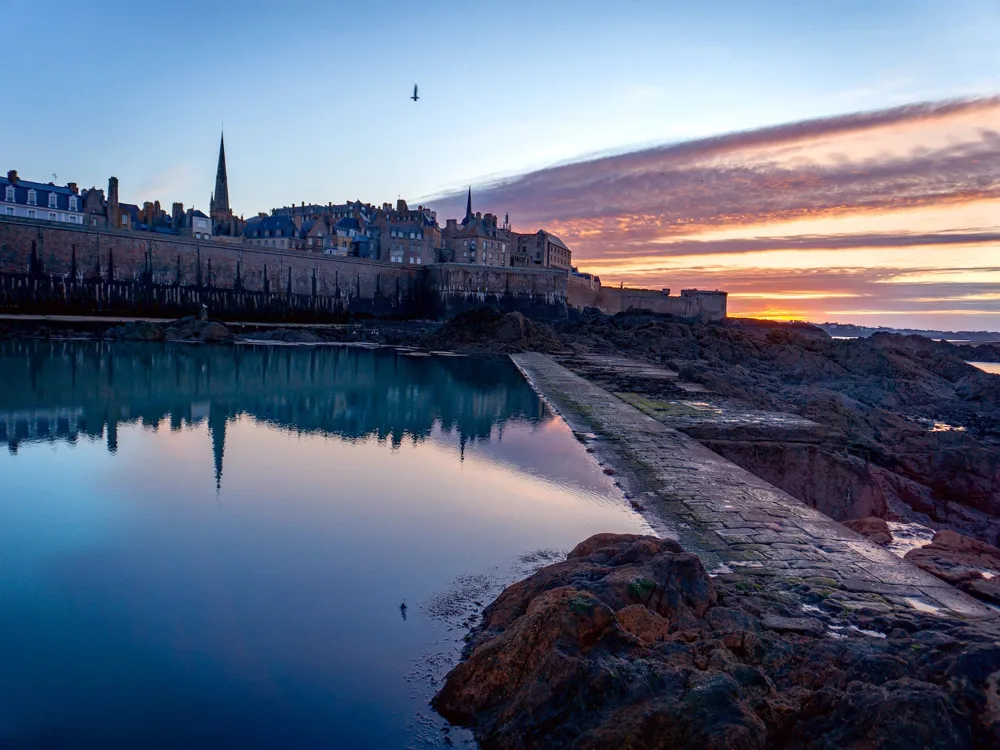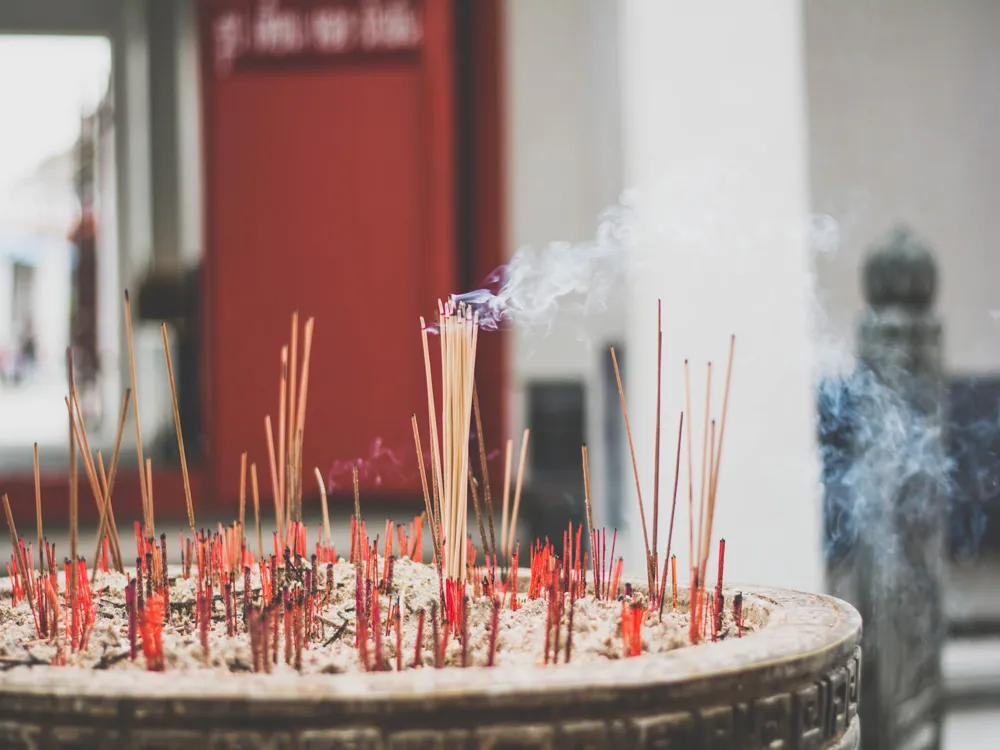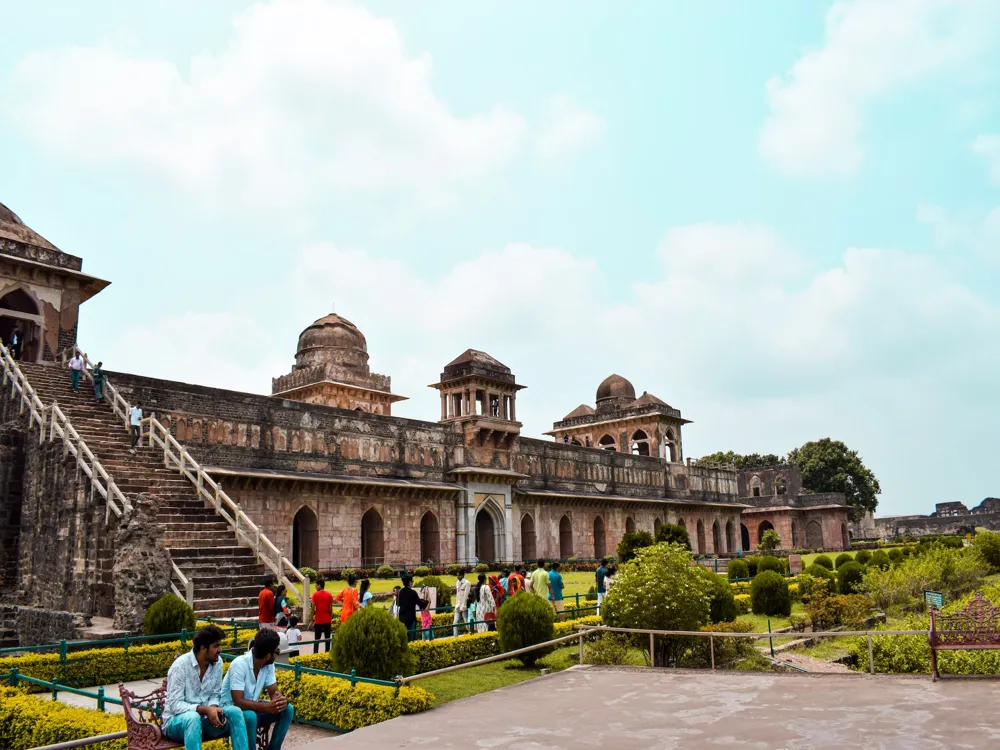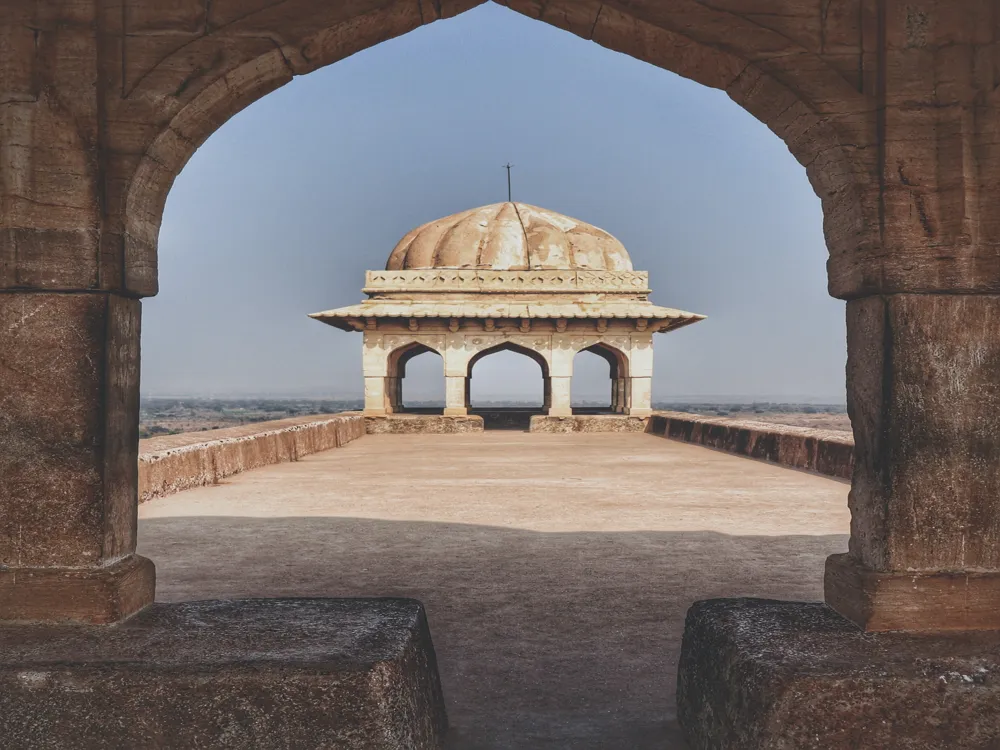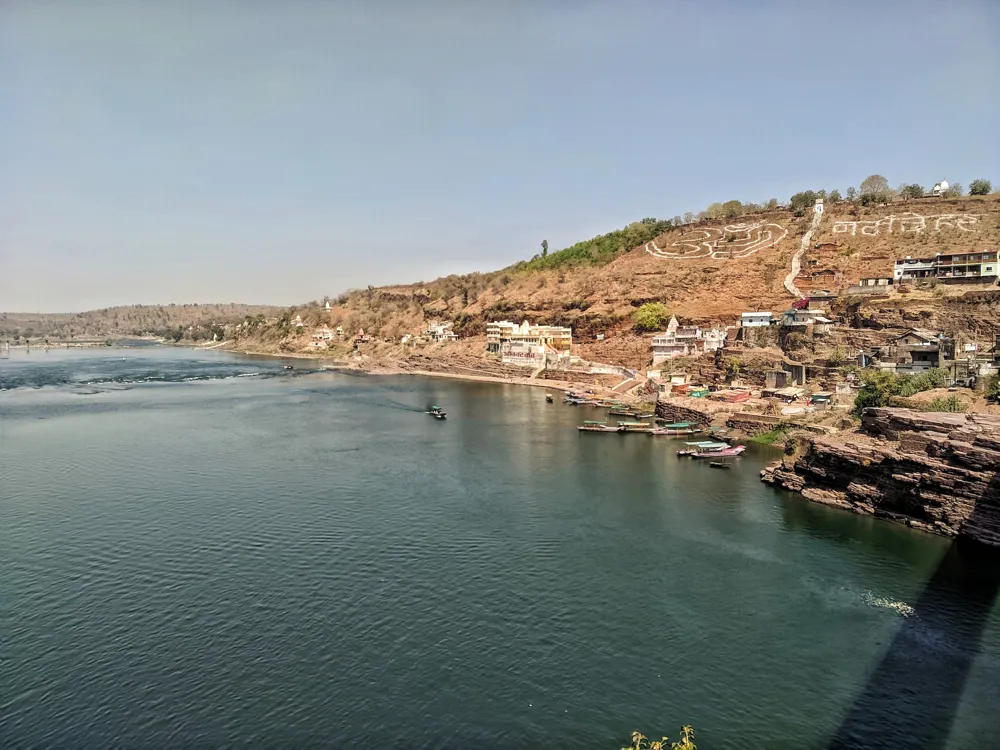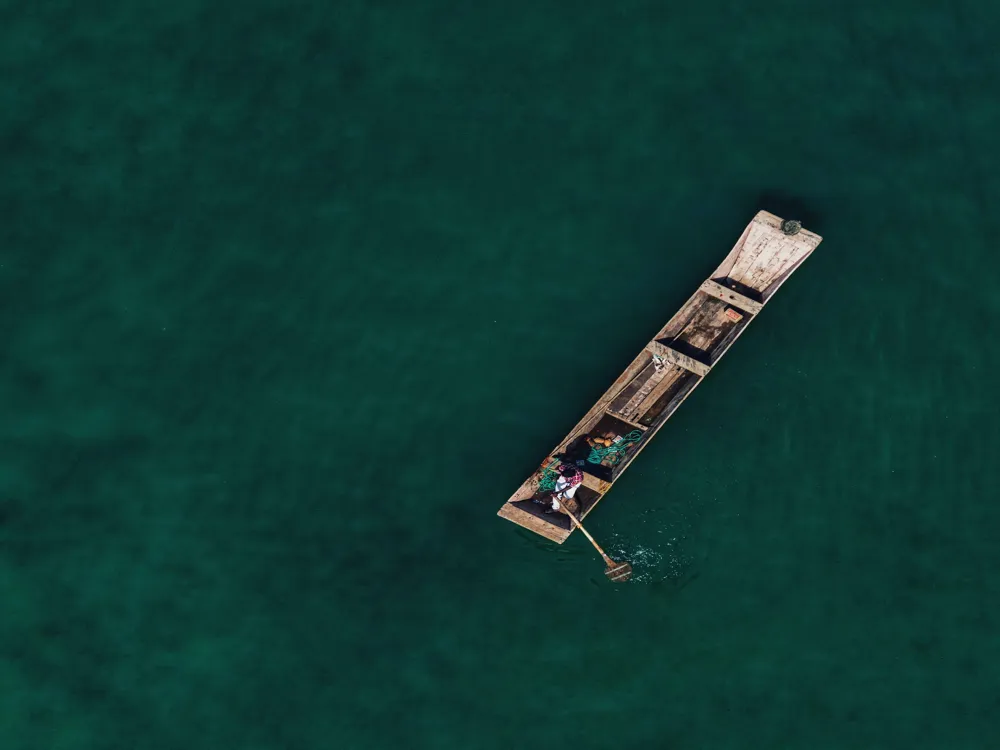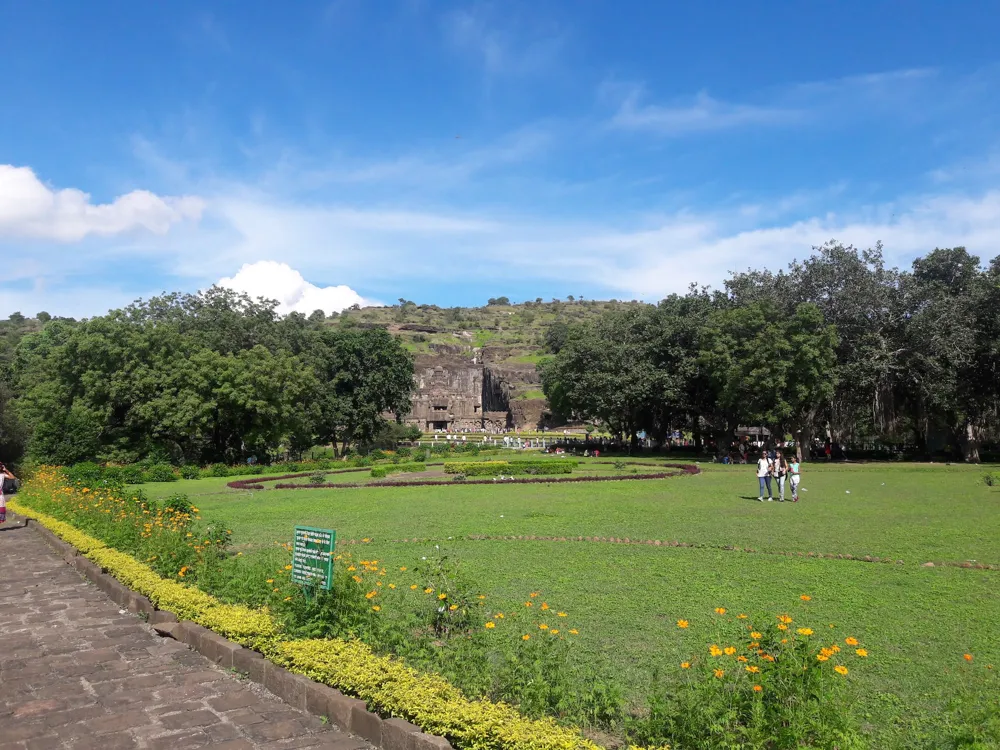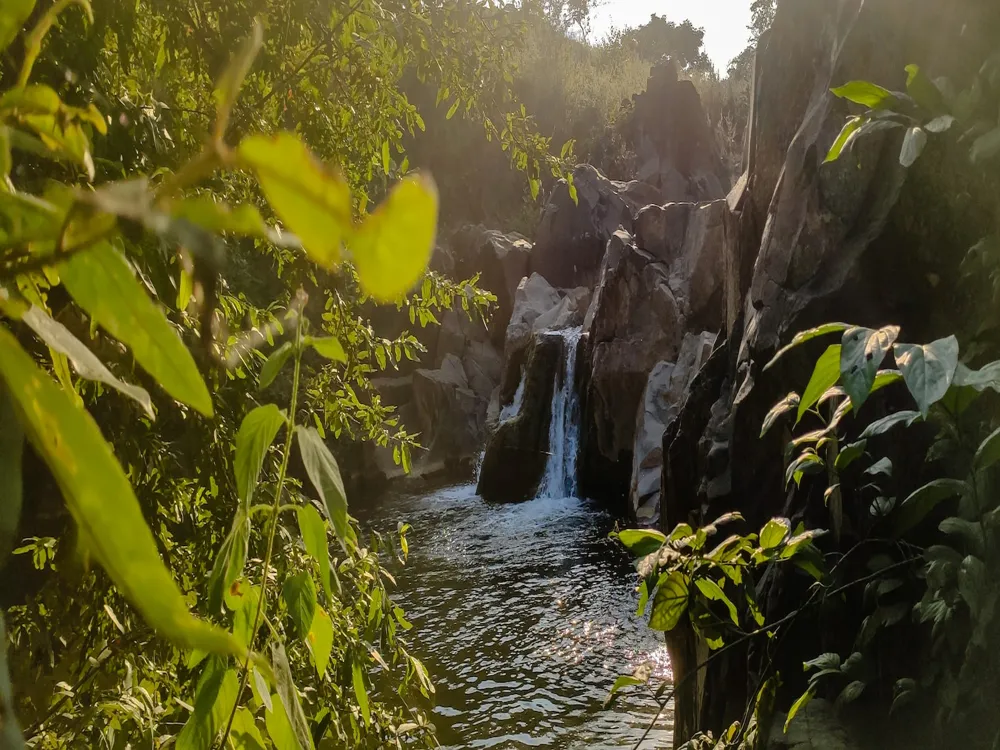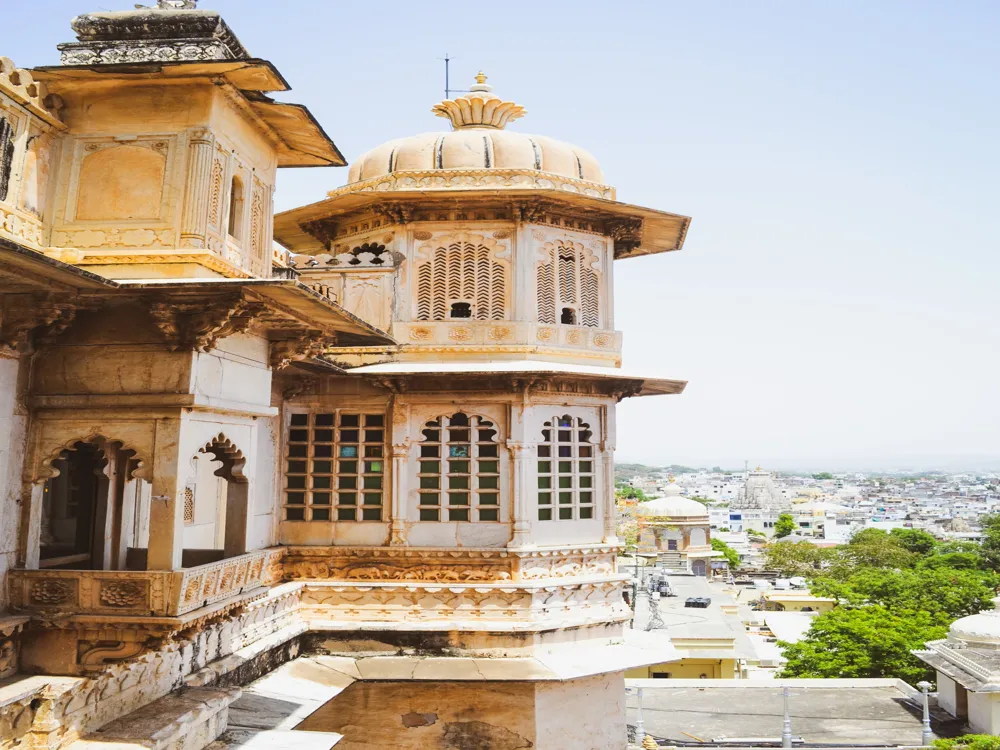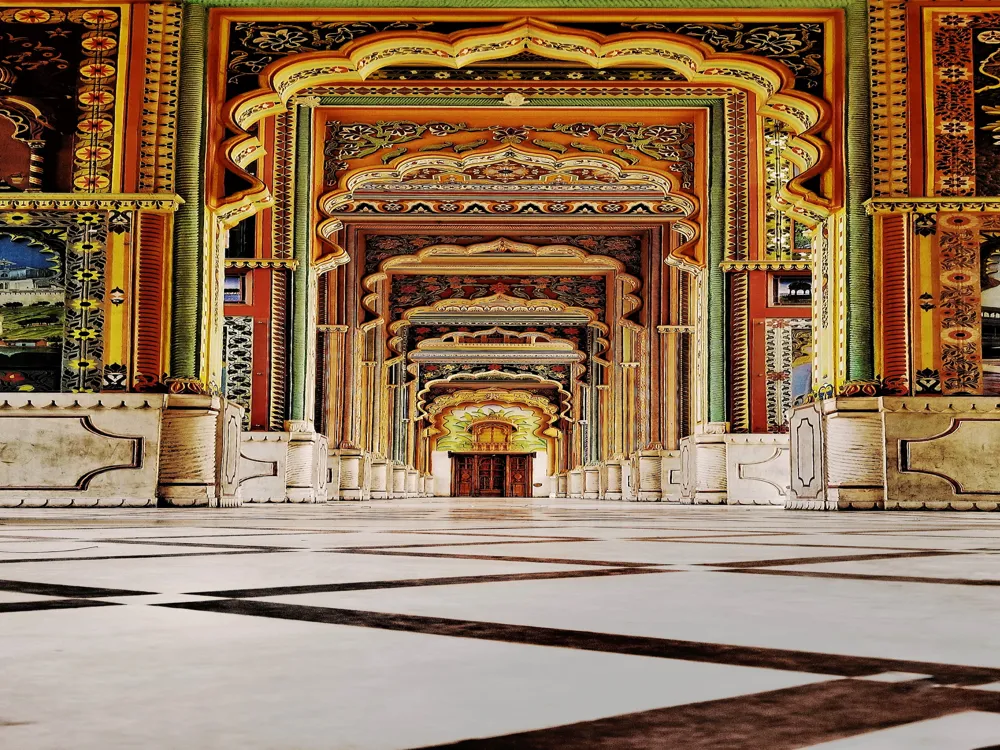Nestled along the banks of the sacred Narmada River, in the heart of Madhya Pradesh, India, lies the historical Holkar Fort, also known as the Maheshwar Fort. This majestic fortification is not just a testament to the region's rich history, but also a symbol of its architectural grandeur and cultural significance. The fort's history is deeply intertwined with the legacy of the Holkar dynasty, particularly under the reign of the revered Queen Ahilyabai Holkar, who transformed Maheshwar into a vibrant pilgrimage and cultural center. The Holkar Fort's origins date back to the 5th century, but it gained prominence in the 18th century under the Holkar dynasty. The fort has witnessed numerous historical events and has undergone several transformations, reflecting the evolving architectural styles over centuries. Today, it stands as a proud reminder of the region's glorious past, attracting historians, architects, and tourists alike. As you approach the fort, you are greeted by imposing walls and bastions that tell tales of the fort's defensive past. The entrance is marked by a grand archway, leading into a world of historical and architectural marvels. Inside, the fort houses several important structures, including palaces, temples, and a cultural complex, each narrating a unique story of the Holkar era. The fort's architecture is a harmonious blend of Maratha, Mughal, and Rajput styles, showcasing intricate carvings, detailed sculptures, and ornate balconies. The use of locally sourced materials, along with the skills of local artisans, adds to the fort's unique character. The Ahilya Wada, the residential quarters of Queen Ahilyabai Holkar, is a highlight, showcasing the simplicity and elegance of her lifestyle. The fort complex also includes several temples, the most notable being the Rajarajeshwara Temple, dedicated to Lord Shiva. The temple's towering spire and elaborate carvings are prime examples of Maratha temple architecture. The ghats (riverfront steps) leading down to the Narmada River are another architectural marvel, providing a serene and spiritual atmosphere. The fort not only represents architectural beauty but also serves as a cultural hub. It hosts several festivals and events throughout the year, celebrating the region's traditions and folklore. The annual Maheshwar Festival, featuring classical music, dance performances, and spiritual rituals, is a major attraction, drawing visitors from across the globe. In conclusion, the Holkar Fort of Maheshwar is a blend of history, architecture, and culture. It offers a glimpse into the rich heritage of Madhya Pradesh and continues to be a source of inspiration and fascination for all who visit. The Holkar Fort, standing majestically on the banks of the Narmada River, is a masterpiece of Maratha architecture with influences from Mughal and Rajput styles, reflecting the diverse cultural and historical influences of its time. The fort's architecture is a testament to the artistic and engineering skills of the 18th century, combining functionality with aesthetic beauty. The fort's layout is a blend of defensive and residential structures, designed to provide both security and comfort. The fort walls, made of local sandstone, are robust and towering, punctuated with bastions and watchtowers that offer strategic views of the surrounding area. The main entrance is an imposing structure, with a large arched gateway that leads into the fort complex. Inside the fort, the Ahilya Wada, the residence of Queen Ahilyabai Holkar, is a prime example of Maratha architecture. The Wada is characterized by its high plinth, large courtyards, and open pavilions. The use of locally sourced stone and wood in its construction reflects the sustainable practices of the time. The Rajarajeshwara Temple within the fort complex is a marvel of religious architecture. The temple's shikhara (spire) is intricately carved, featuring motifs and sculptures that depict various deities and mythological scenes. The temple's sanctum is adorned with fine carvings, and the surrounding corridors provide a tranquil space for meditation and prayer. The fort's balconies and windows are notable for their intricate latticework, showcasing the skill of the local craftsmen. These not only add to the aesthetic appeal but also serve functional purposes, allowing ventilation and light while maintaining privacy. The ghats leading to the Narmada River are another architectural highlight. These steps, built with precision and care, provide access to the river for religious rituals and daily use. The ghats also host various cultural and religious activities, becoming a lively center of community life. In summary, the architecture of Holkar Fort is a blend of various styles and techniques, reflecting the rich cultural tapestry of Maheshwar. Its structures speak volumes about the ingenuity and creativity of its builders, making it a must-visit destination for architecture enthusiasts. The ideal time to visit the Holkar Fort is between October and March when the weather is pleasant, making it conducive for exploring the fort and its surroundings. Avoid the monsoon season, as the river and the fort area might be prone to flooding. Opt for a guided tour to gain deeper insights into the fort's history and architecture. Local guides are available at the entrance and can provide fascinating anecdotes and lesser-known facts about the fort. Dress conservatively, especially when visiting the temples within the fort complex. Comfortable walking shoes are recommended as there is a lot of ground to cover on foot. Photography enthusiasts should visit during the early morning or late afternoon for the best light. The fort's architecture and the riverfront offer excellent opportunities for both landscape and architectural photography. Respect the local customs and traditions, especially during religious ceremonies. Seek permission before photographing local people or religious rituals. There are several local eateries around the fort offering traditional Madhya Pradesh cuisine. For accommodation, options range from budget homestays to luxury heritage hotels in the vicinity. Holkar Fort in Maheshwar is well-connected by road, rail, and air. The nearest airport is in Indore, about 91 kilometers away. From Indore, you can hire a taxi or take a bus to Maheshwar. The closest railway station is Barwaha, approximately 39 kilometers from Maheshwar. Regular bus services and taxis are available from major cities in Madhya Pradesh to Maheshwar. For a more scenic route, consider a road trip along the banks of the Narmada River. Read MoreOverview of Holkar Fort in Maheshwar, Madhya Pradesh
Architecture of Holkar Fort
Tips When Visiting Holkar Fort
Best Time to Visit
Guided Tours
Dress Appropriately
Photography Tips
Local Etiquette
Food and Accommodation
How to Reach Holkar Fort
Maheshwar Tourism
Best Time to Visit Maheshwar
How to Reach Maheshwar
Things To Do Maheshwar
Holkar Fort
Maheshwar
Madhya Pradesh
NaN onwards
View maheshwar Packages
Maheshwar Travel Packages
View All Packages For Maheshwar
Top Hotel Collections for Maheshwar

Private Pool

Luxury Hotels

5-Star Hotels

Pet Friendly
Top Hotels Near Maheshwar
Other Top Ranking Places In Maheshwar
View All Places To Visit In maheshwar
View maheshwar Packages
Maheshwar Travel Packages
View All Packages For Maheshwar
Top Hotel Collections for Maheshwar

Private Pool

Luxury Hotels

5-Star Hotels

Pet Friendly







